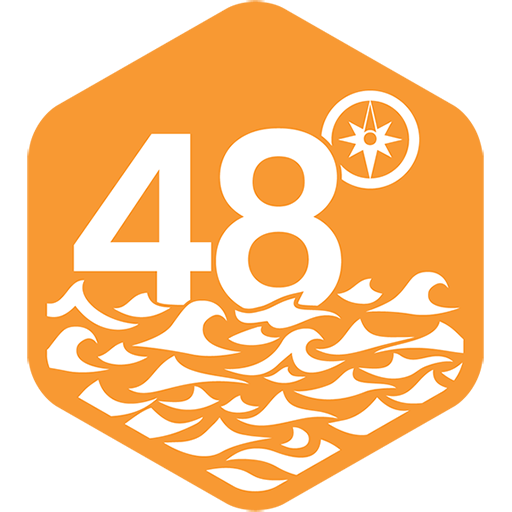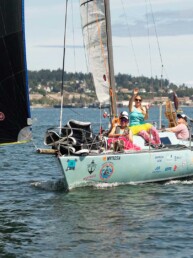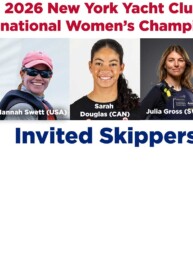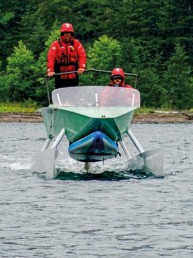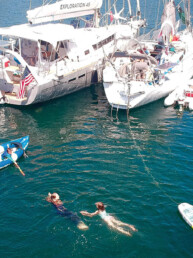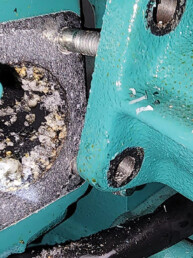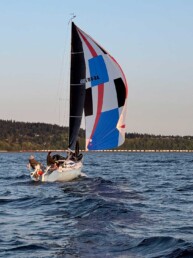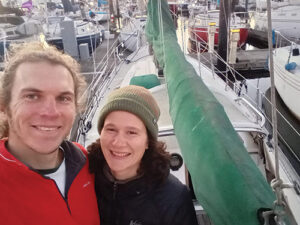 We started seriously considering cruising in the fall of 2023 and now, after almost a year on the boat, it’s entertaining to look back on our journey. At the time, we were looking for a long-term, sustainable lifestyle that meshed with our values—close to nature, frugal, intrinsically challenging, and self-sufficient.
We started seriously considering cruising in the fall of 2023 and now, after almost a year on the boat, it’s entertaining to look back on our journey. At the time, we were looking for a long-term, sustainable lifestyle that meshed with our values—close to nature, frugal, intrinsically challenging, and self-sufficient.
At first, we considered homesteading in the far north (or as close to homesteading as you can get in the modern world) but we didn’t feel ready to put down roots in one place quite yet. Of the two of us, only Victor had sailing experience: sailing in the Great Lakes on family boats and serving as crew on an Atlantic crossing as a teenager. We both have sea kayaked, SCUBA dived, and surfed for some years together, however, and were very familiar with the powerful tides, currents, and waves of the northern Pacific.
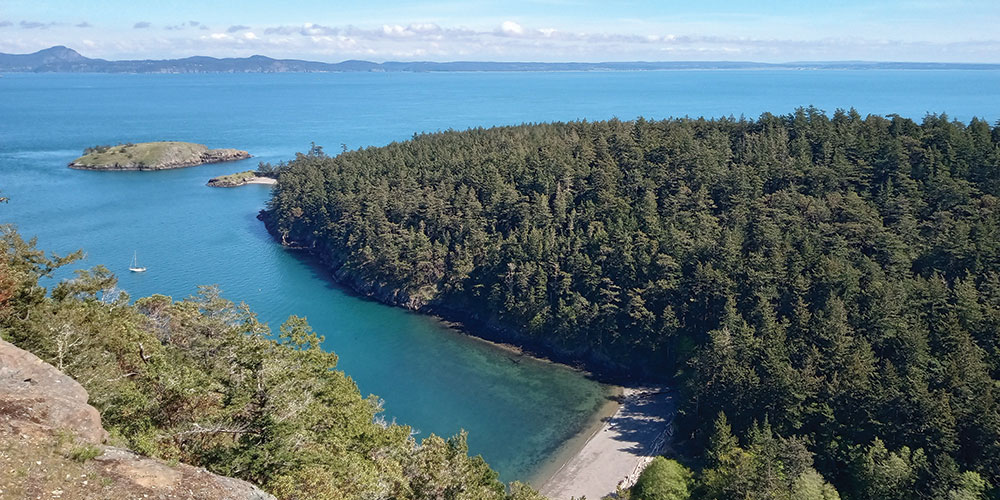
Inspiration
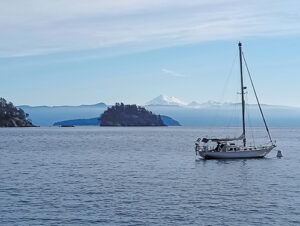
When we were starting out, two books were instrumental in shaping our approach to and confidence in cruising: Maiden Voyage by Tania Aebi, and Swell by Liz Clark. In Maiden Voyage, Aebi sets off at the age of 18 and sails solo around the world without items like a life raft or GPS. She even managed to make it from New York through the Panama Canal before really figuring out her celestial navigation. Reading her story gave us the confidence that we’d be able to take on a larger sailing journey, and that some of the modern gear was optional.
In Swell, Liz Clark recounted her many years sailing solo from California to Panama and then on to the South Pacific. Rather than describing one big voyage, Clark delves into how she created a long-term cruising lifestyle that agreed with her personality. Her honesty about the difficulties she encountered along the way—most notably the large amounts of time that boat maintenance could take—served as a reality check for us. We also loved that she was into surfing, and was able to keep doing it while cruising. While we liked the idea of sailing as a means to travel and live in different out-of-the-way places, we certainly didn’t want to stop surfing, backpacking, hiking, and free diving.
With these stories helping bring a version of cruising life that might fit us into focus, our initial plan was to spend some time learning how to sail together on our own boat in protected waters before seeking out passagemaking experience. We’d previously lived in the San Francisco area and decided that would make a good first destination to aim for from western Washington, our home base at the time.
The Boat
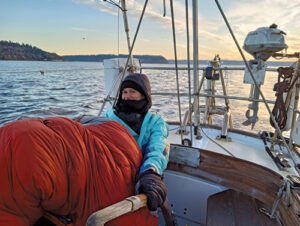
We started looking at boats in November 2023, planning to quit our jobs sometime in the spring and start cruising. We wanted a boat that was outfitted for extended cruising, not in need of major work, and affordable. Eight boats in the greater Seattle area popped up on our list and appeared to fit those criteria. After viewing them in person, we narrowed it down to three options.
If we wanted a boat that was affordable for us, we knew we’d need to negotiate prices down and wanted to make sure not to be attached to any single boat. Our first choice ended up being a 1968 Camper-Nicholson 32 called Aeoli, which had been outfitted a decade ago by the previous owners for their two-year cruise. While much older than what we’d anticipated buying, we gauged it as needing the least up-front work. Aeoli was already equipped with things like a Monitor windvane and a solar setup. After some negotiation and a positive survey, we agreed on a price that was around half of what it was listed for. A few days after Thanksgiving, we brought our new home from Everett to Sequim during a beautiful early winter day on the water and moved onto it. Now we were committed!
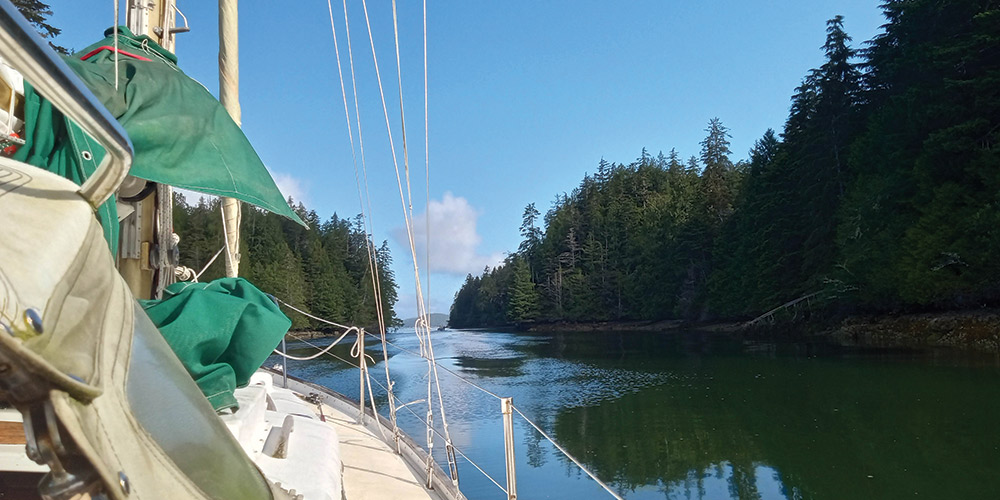
Living Aboard
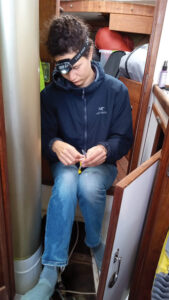
We were still working remotely when we moved onto the boat, so we intentionally decided to put off all non-essential boat work until we quit our day jobs. A large part of our evolving cruising philosophy was that we wanted to do pretty much every maintenance and repair task ourselves. We didn’t even sail the boat the remainder of that winter, but that didn’t stop things from breaking.
The day after we moved onto the boat, our galley freshwater foot pump—the only running water on the boat—stopped working. After trying fruitlessly to gain access to the space where it was installed (under and around numerous hoses and fuel lines) we gave up and got used to using a jerry can for our water needs onboard. Doing without was a principle we were really trying to lean into, and this was good practice. Our months working were definitely a bit stressful as we’d turned our V-berth into a storage unit and were essentially living in the main cabin, and the limitations of that space were especially evident on cold rainy days and during concurrent Zoom meetings.
We wanted some time to acquaint ourselves with the boat before we started cruising full-time and, looking at the calendar, we realized we’d probably want to start that sooner rather than later. We quit our jobs in March and after a couple weeks of break between corporate work and boat work, we dove right into the refit. We had lists after lists in three different notebooks.
We had a few big work items like replacing the standing rigging, but most of our work involved learning the systems on Aeoli. We had brought the boat up to Anacortes and were alternating dockside work and trips to West Marine with some cruises in the San Juan Islands. It was April and still quite cold at times onboard with no heat, but getting out sailing helped us see where our gaps in knowledge were and what tasks we could do without.
Aeoli came out of the water in the first week of May and we put in a hectic week of work at the boatyard. We worked with a crane operator and a rigger to help us complete the standing rigging job, and we were off! While we only made it to Cypress Island that week, it was wonderful to be really cruising after all the work leading up to it.
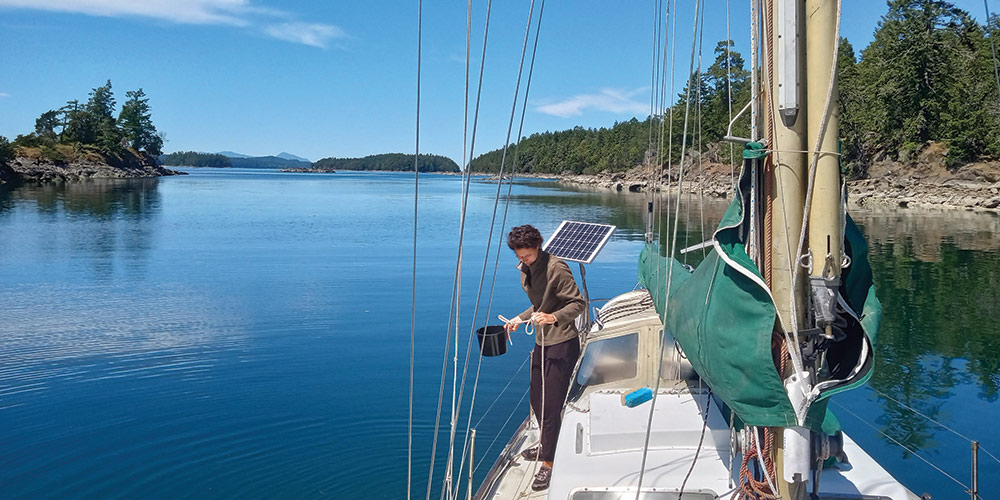
OFF THE DOCK AND STILL LEARNING
The San Juan and Gulf islands were a perfect place for us to get used to life on anchor. We enjoyed sailing and hiking the islands along with days focused on boat work that we hadn’t been able to finish at the slip. We also had a list of skills we wanted to practice before taking on passages down the coast, such as rigging a preventer and using our whisker pole for sailing downwind.
One of the biggest lessons we learned was how to prioritize truly necessary boat work from work that would just slow us down. It’s difficult to know what work or gear you need on your boat if you don’t have previous experience with the particular voyage you’re undertaking, but for us, we found it was most helpful to break the journey up into stages. For instance, we considered a ground tackle upgrade. The boat came with a 35 pound CQR anchor, 200 feet of rusty chain that we cut down to 100 feet after inspecting it, and 300 feet of nylon rode. Initially, we planned to update our chain to 200-300 feet, and upgrade our anchor to one of the newest and greatest that everyone told us we needed. But night after night of secure anchoring on our CQR, including some very windy early spring days, eventually convinced us it wasn’t necessary for the first leg of our trip to San Francisco. We punted that decision down the line until a time when we had a better idea of where we were going next.
On the other hand, an example of an upgrade that we did actually do was changing out our tender. Aeoli had come with an inflatable dinghy and outboard, and it worked great for our first few weeks out on the water. However, we came into sailing from a sea kayaking background, and found that we kept missing the feeling of being closer to the water and having a vessel that rowed better. So, we ended up selling the dinghy and outboard, and replaced it with an inflatable tandem kayak that brought us much more joy.
This approach to cruising also allowed us to work on our projects as we went, rather than finishing everything before heading out. Our 1984 Monitor windvane needed a gear realignment, and the parts involved were all corroded together. We were able to fix it eventually, but we worked on it as we sailed out of the Strait of Juan de Fuca and up the west side of Vancouver Island while experimenting with other low-tech self steering techniques—another opportunity to practice “doing without.” If we’d added that fix to the list of projects we had before leaving, we would’ve missed out on some very lovely and uncrowded spring sailing experiences in the San Juan Islands, and stressed ourselves out quite a bit more. We were also ready to break up our sail down the coast into smaller hops if the windvane ended up not being repairable and we had to hand-steer instead. Embracing this flexibility de-coupled our journey from the need to fix things, which was much easier and more enjoyable for us mentally.
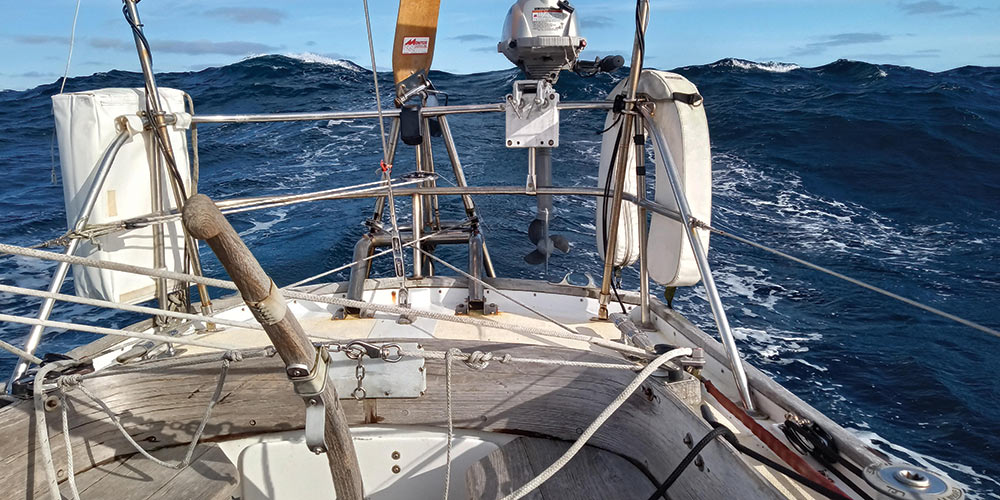
HEADING OFFSHORE
Our first passage was from Bamfield, British Columbia to Newport, Oregon in a short-period 9-foot swell left over from an atmospheric river in early June and conditions the NWS described as “June-uary.” Unsurprisingly, it was a wholly different experience from our previous cruising in protected waters, and certainly isn’t a passage for everyone. Yet, we were eager to give it a go.
The night watches were brutally cold and wet without heat on the boat. Aeoli rocked and rolled like crazy in those steep waves. Adding a layer of complexity were so many fishing boats milling around, changing course seemingly at random in the middle of the night as we struggled to adjust our sails and avoid collisions.
We spent night watches swathed in thermals and jackets underneath kayaking drysuits, topped off with an old oversized snowboarding jacket that we traded off wearing. The person off watch huddled and sometimes even managed to doze in the freezing cabin down below under a damp zero-degree sleeping bag. By the end of that passage, we were hallucinating lights and noises, famished and probably dehydrated from seasickness, and desperately craving a safe marina where we could plug in our electric heater. But we’d also learned a great deal about how to sail safely and effectively in big swells and big wind, how to handle night watches with a crew of two, and how to transit a challenging bar. We figured it couldn’t get much harder, so we pressed on!
With the exception of some sporty conditions around Cape Blanco, the subsequent passages felt less dramatic as our experience grew, and we learned to pick some milder weather windows. We ended up stopping in Crescent City and Drakes Bay as well, and hugely enjoyed each of our stops. All of them had surf breaks within walking distance from our marina or anchorage, and we took advantage of the swell that had been missing from our previous protected water cruising.
Crescent City was especially fun for us due to their fantastic public transit system, which allowed us to spend almost a full week hiking and backpacking the Redwoods National and State Parks. The selfie we took crossing under the Golden Gate bridge shows us smiling like lunatics, overjoyed to have covered so much distance in our little boat.
We’re now in the Channel Islands sailing south from San Francisco after almost three months of marina time for Aeoli and a good break from the boat for us. We were lucky enough to enjoy some wonderful backpacking weather this summer, and are refreshed and ready for the rest of our sail south down to Baja. After that, who knows! We’re just glad we took this big jump into cruising.
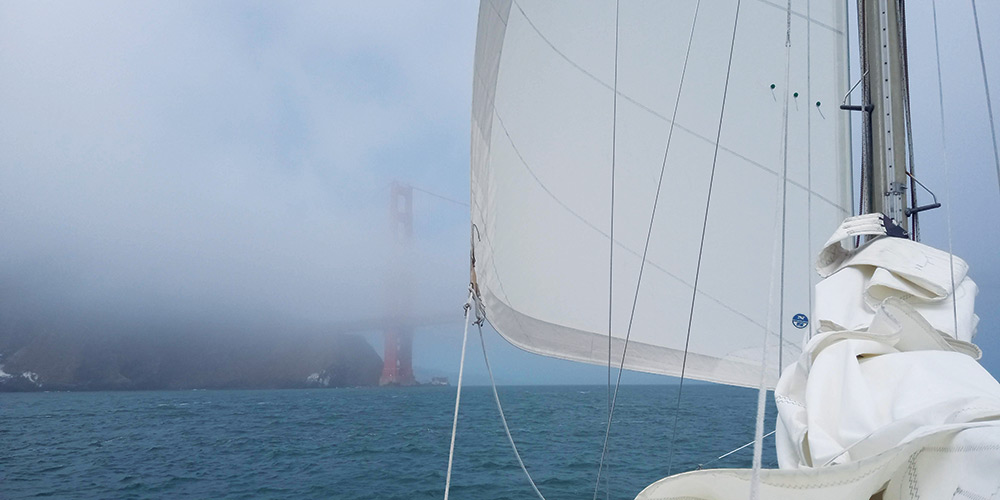
Victor and Medeea met in the San Francisco Bay Area and moved up to Washington to chase more wilderness and cheaper rents. Victor is originally from Chicago and Medeea was born in Romania, but grew up on the East Coast.
